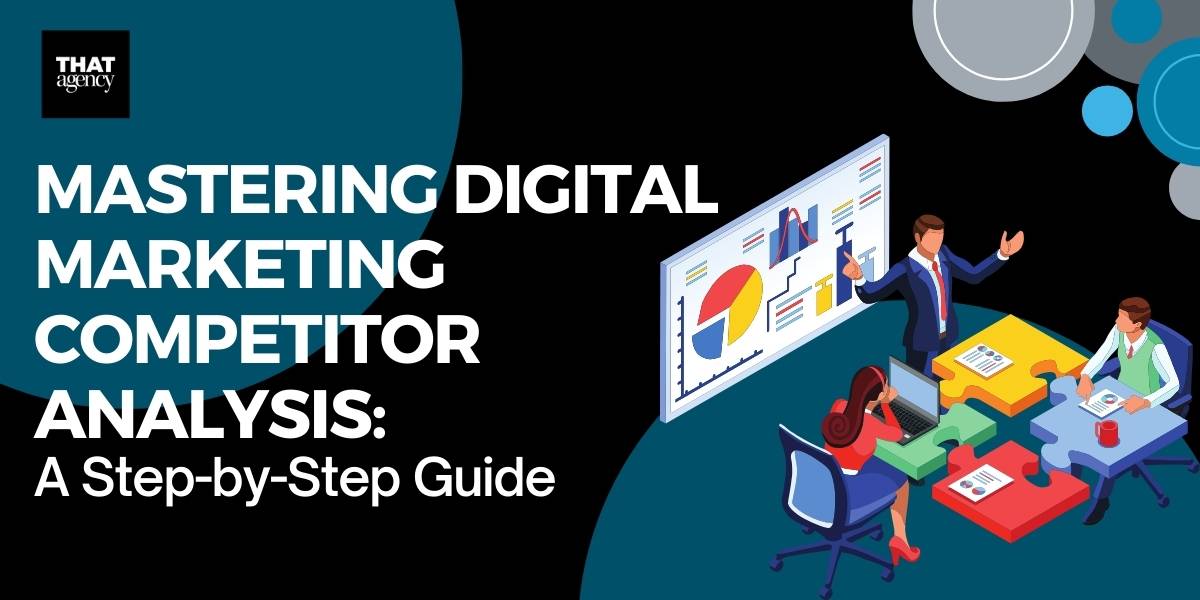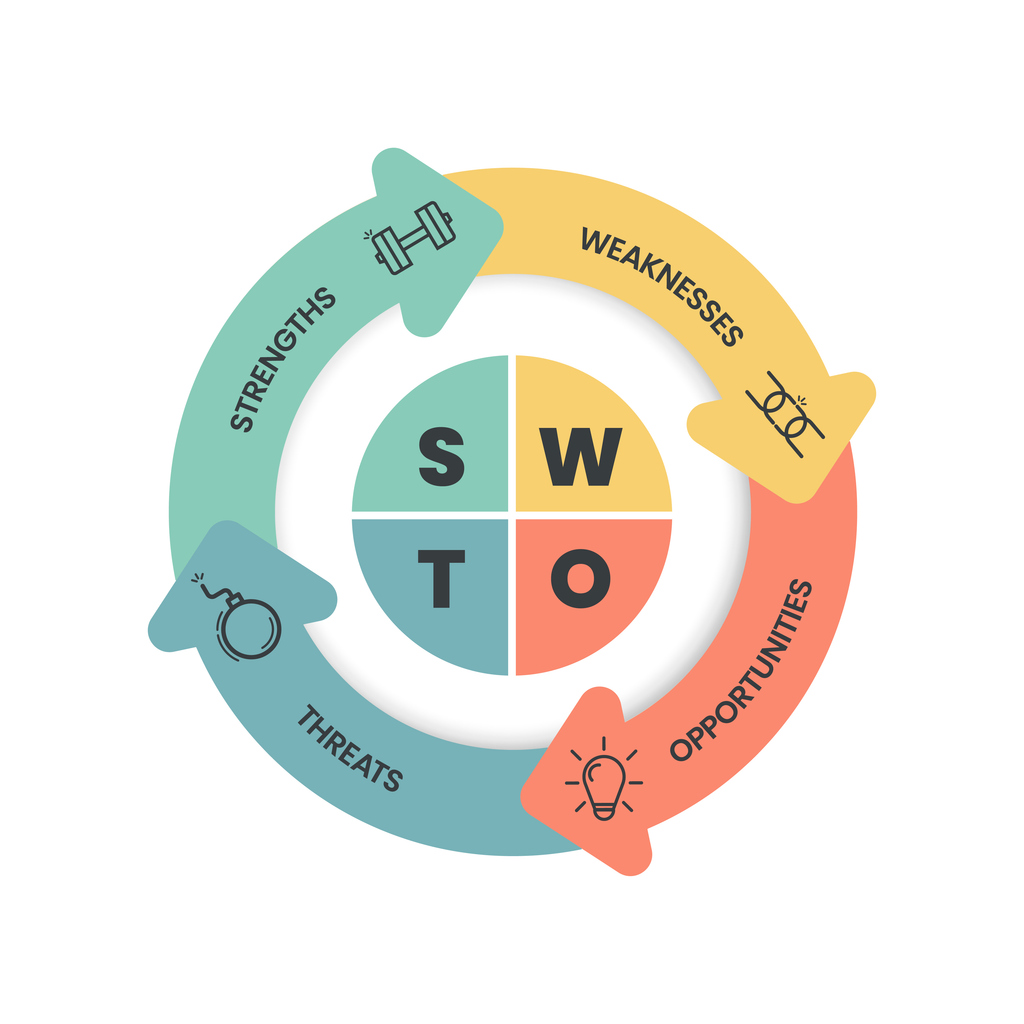The ability to conduct a thorough digital marketing competitor analysis is not just an advantage—it's a necessity. For businesses aiming to elevate their online presence, understanding how to meticulously monitor competition is crucial. From small startups to large enterprises, grasping the intricacies of competitor analysis can significantly enhance strategic decisions, propelling your brand toward success. THAT Agency stands at the forefront of this endeavor, offering a suite of digital solutions tailored to amplify your brand's visibility, drive web traffic, and boost revenues.

The Imperative of Digital Marketing Competitor Analysis
Digital marketing competitor analysis is not just an activity; it's a strategic foundation that sets the stage for achieving unparalleled success in the online market. This detailed process is critical for businesses aiming to not only compete but dominate in their respective digital spaces. Here's a deeper dive into each step of the process and how it contributes to forming an unbeatable marketing strategy.
Step 1: Identifying Your Competitors
The first step, identifying your competitors, goes beyond recognizing the direct competitors within your industry. It involves a broader view, considering any business that competes for your potential customer's attention online. Utilizing advanced tools like SEMrush or Ahrefs helps in this regard by analyzing keywords, backlinks, and content topics. This step is crucial as it lays the groundwork for a comprehensive competitor analysis by casting a wide net to ensure no potential competitor is overlooked, including those outside your immediate industry but still vying for the same online space.

Step 2: Analyzing Competitors’ Websites and SEO Performance
Understanding the online presence of your competitors involves a meticulous examination of their websites and SEO strategies. This includes analyzing site structure for user experience, the quality and relevance of content, and the effectiveness of their SEO tactics. Tools such as Moz and Google Analytics offer insights into competitors' search engine rankings, helping businesses understand what keywords are driving traffic to their competitors' sites, how well they're performing in search engine results pages (SERPs), and the overall user engagement with their content. This step is vital for identifying both the strengths to emulate and weaknesses that can be capitalized upon.
Step 3: Monitor Competition on Social Media
Social media analysis is imperative for understanding how competitors engage with their audience. This includes the types of content shared, the frequency of posts, and how they interact with users. Social media platforms offer a direct line to customer sentiment and preferences, making this analysis invaluable for crafting strategies that resonate more effectively with your target audience. The insights gained here can guide the development of a more dynamic and engaging social media strategy for your brand.
Step 4: Content and Advertising Insights
Delving into the content and advertising strategies of competitors sheds light on the narratives and messages they prioritize. This investigation helps in understanding the types of content (blogs, videos, infographics) that competitors produce, the platforms they use for distribution (social media, email marketing, paid ads), and the nature of their advertising efforts. Identifying gaps in their strategies can reveal unique opportunities for your brand to differentiate itself and capture audience attention in spaces where competitors are not active or underperforming.
Step 5: Performance Benchmarking
Benchmarking involves comparing your digital performance metrics such as website traffic, conversion rates, and social media engagement against those of your competitors. This process provides a clear picture of where your brand stands in comparison to the competition and identifies areas for improvement. Benchmarking is critical for setting realistic performance goals and crafting strategies to enhance your digital presence effectively.

Step 6: SWOT Analysis
Finally, conducting a SWOT analysis offers a holistic view of your competitive landscape by identifying your strengths, weaknesses, opportunities, and threats about your competitors. This strategic evaluation allows you to leverage your unique advantages, improve areas of weakness, seize new opportunities, and develop strategies to mitigate potential threats. The SWOT analysis is a powerful tool that informs decision-making and strategic planning, ensuring that your digital marketing efforts are not only reactive to the current market but also proactive in positioning your brand for future success.
Through these steps, digital marketing competitor analysis provides the insights necessary to craft strategies that are both informed and innovative, ensuring that your brand is not just participating in the digital realm but leading it.

Leveraging Insights for Strategic Advantage
In the realm of digital marketing, possessing a wealth of data and insights about the competitive landscape is akin to having a treasure map in the quest for market dominance. The real magic, however, lies in the ability to leverage these insights for strategic advantage. This process involves a meticulous approach to adapting your strategies, tailoring your content, optimizing SEO practices, and refining your social media approach based on a comprehensive analysis of your competitors and the broader market environment. Here’s how to effectively turn insights into actionable strategies.
Adapting Strategies to Address Gaps
The initial step is to analyze the information gathered during the competitor analysis to identify any gaps in your strategies. These gaps could range from missed keyword opportunities, and underutilized social media platforms, to gaps in content that addresses specific customer pain points. Addressing these gaps requires a strategic pivot or enhancement of existing tactics to ensure your digital presence is comprehensive and robust. For instance, if a gap is identified in the use of video content, the strategic adaptation might involve investing in video production and distribution across relevant platforms where competitors are already active or missing.
Tailoring Content for Maximum Engagement
Content is the cornerstone of digital marketing, serving as a primary tool for engaging with your audience and conveying your brand’s message. Leveraging insights means tailoring your content strategy to not only fill the gaps identified but also to resonate more deeply with your target audience. This could involve creating more personalized content, utilizing formats that have shown higher engagement rates (such as infographics or interactive posts), or addressing topics that competitors have overlooked. The goal is to create content that is not just informative but also compelling and differentiated from what is already out there.
Optimizing SEO Practices for Enhanced Visibility
SEO optimization is an ongoing effort that requires constant refinement to stay ahead of algorithm changes and competitors' tactics. Leveraging competitor insights here involves identifying the keywords and SEO strategies that are driving traffic to their sites and then optimizing your content to compete for those same keywords. It also means improving on-site SEO elements like meta tags, headers, and site structure to enhance user experience and search engine visibility. Additionally, off-site SEO tactics such as building quality backlinks and local SEO optimization can further improve your site’s authority and ranking.

Refining Social Media Approach to Outshine Competitors
Social media platforms are dynamic spaces where brands can engage directly with their audience. Refining your social media approach involves analyzing competitors’ engagement strategies and identifying what works in terms of content type, posting frequency, and user interaction. This insight can guide the development of a more targeted social media strategy that leverages the strengths of each platform. It also involves engaging with your audience in a more meaningful way through interactive content, timely responses to comments, and leveraging trending topics or hashtags to increase visibility.
Implementing Continuous Learning and Improvement
Finally, leveraging insights for strategic advantage is not a one-time activity but a continuous process of learning and improvement. The digital landscape and competitive dynamics are constantly evolving, requiring marketers to stay agile and adaptable. This means regularly revisiting your competitor analysis, staying abreast of the latest digital marketing trends, and being willing to experiment with new strategies to see what delivers the best results.
Unlocking Digital Dominance: How Continuous Competitor Analysis Elevates Your Strategy
Transforming insights into action is the key to gaining a strategic advantage in the competitive digital marketing landscape. By adapting strategies to address gaps, tailoring content for engagement, optimizing SEO practices, and refining social media approaches, businesses can not only compete more effectively but also position themselves as leaders in their respective niches. Digital marketing competitor analysis is not a one-time task but an ongoing process. Markets evolve, and competitors adapt. Regularly updating your analysis ensures that your strategies remain relevant and effective.
At THAT Agency, we understand the power of informed digital marketing strategies. Our expertise in web design, online advertising, content creation, and SEO is designed to propel your business to new heights. If you're looking to enhance your online presence and outperform the competition, contact us for a comprehensive digital solution tailored to your unique needs. Let's navigate the digital landscape together, turning challenges into opportunities for growth.




